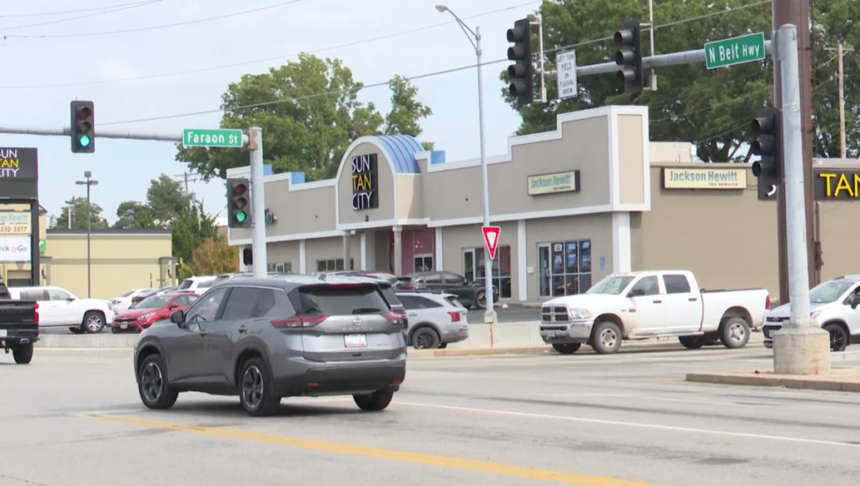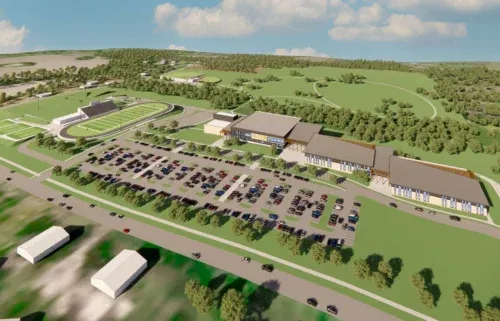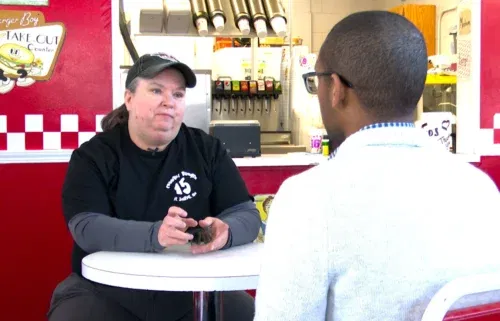Police targeting high-risk intersections in St. Joseph

By Jenna Wilson
Recent police data revealed some of the most dangerous intersections in St. Joseph when it comes to car crashes.
In 2023, some intersections were marked as more hazardous than others due to the number of accidents, and if you ask residents why, they’ll tell you they all have one thing in common — too much speeding.
“A lot of times it’s people that don’t even live over here dragging this place out,” said St. Joseph resident James Jenkins. “Racing up and down the street all night and it’s frustrating because we’ve got kids living over here.”
Jenkins lives in a neighborhood near North Belt Highway and Faraon Street — the intersection at No. 3 on the list of the top three hazardous intersections last year. This intersection saw six traffic crashes in 2023, according to police data.
Pickett Road and South Belt Highway came in No. 2 on the list with 10 traffic crashes at the intersection during 2023.
Fredrick Avenue and North Woodbine Road was No. 1 on the list, seeing 15 traffic crashes.
“It’s immediately concerning that this is the No. 1 intersection for crashes over the last year,” said Sgt. James Tonn, St. Joseph Police Department traffic officer. “Keep in mind, by the sheer number of crashes that we have overall, it is only a small percentage, but we still look at that and realize we need to figure out why that is.”
News-Press NOW spoke with residents around the area, and many were not surprised that Frederick and Woodbine was the No. 1 intersection for crashes, referring to it as a “catastrophe” to drive through. Resident Demetrius Lewis, who walks the intersection every day to get to work, emphasized how dangerous it can be.
“If you’re a pedestrian in this area, you got to have eyes in the back of your head to not get hit,” Lewis said. “Just like you learn in those childhood years, look left, right and look left again because there’s always speeding, bumper-to-bumper traffic and it’s unsafe, I think. Something has to be done about it.”
While speeding and distractions can play a large role, police said, contributing factors in crashes at each of these intersections are:
- 65% failure to yield: Most of the time this means someone turned in front of someone else after running a red light, or turned when they should have waited for oncoming traffic.
- 33% following too closely: Police use this indication when someone rear-ends another vehicle and most of the time, it’s a result of the driver being distracted and they were too close to react to the vehicle in front of them.
- 2% improper lane change: Someone changed lanes without looking and hit the vehicle next to them.
“People pulling out in front of people is the No. 1 reasoning for the many crashes here, followed by people rear-ending others at this intersection,” Tonn said. “And that’s happening all over town, not just this intersection, but it’s more prevalent here when you look at crash data.”
The infrastructure of Frederick and Woodbine is also a key reason people see crashes here often.
“It’s a relation to our main thoroughfares in town,” Tonn said. “So you got the Belt or 169 on the west, you got I-29 on the east, and they converge right here at Frederick and Woodbine. So, you’ve got so much traffic going through here, statistically, you’re going to have more crashes.”
Some intersections will see more traffic than others, but what it all comes down to is taking time to yield and not being distracted when operating a vehicle so the number of crashes can be reduced.
“Put the phones down,” Tonn said. “And when you try to beat a light or think you have time to quickly drive through and beat a car, please, look twice. If you just give it those few extra seconds and make it safely through the intersection, you go home safe and no one gets hurt.”
St. Joseph police will continue to patrol all streets and intersections throughout the city of St. Joseph accordingly but officers stressed they are increasing their presence at high-crash intersections to get more people to obey traffic laws.
“Officers are out there all the time,” said Tonn. “We focus on those areas that we put out every month where our higher crash areas are and a lot of the times it does involve the Belt somewhere, just by the sheer volume of traffic. So, we go out there and we do directed enforcement.”
“We’re looking for speeders because higher speed means more injuries,” Tonn said. “But it’s more than that; we’re looking for license plates, for lane violations and looking for improper equipment. Anything to make these accidents lessen and make the public aware that we are out there and watching.”



